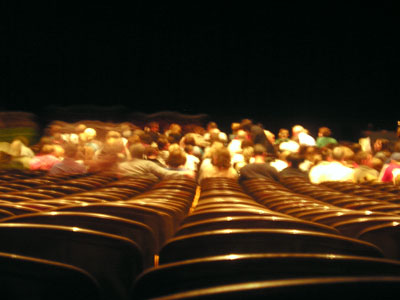All Nonfiction
- Bullying
- Books
- Academic
- Author Interviews
- Celebrity interviews
- College Articles
- College Essays
- Educator of the Year
- Heroes
- Interviews
- Memoir
- Personal Experience
- Sports
- Travel & Culture
All Opinions
- Bullying
- Current Events / Politics
- Discrimination
- Drugs / Alcohol / Smoking
- Entertainment / Celebrities
- Environment
- Love / Relationships
- Movies / Music / TV
- Pop Culture / Trends
- School / College
- Social Issues / Civics
- Spirituality / Religion
- Sports / Hobbies
All Hot Topics
- Bullying
- Community Service
- Environment
- Health
- Letters to the Editor
- Pride & Prejudice
- What Matters
- Back
Summer Guide
- Program Links
- Program Reviews
- Back
College Guide
- College Links
- College Reviews
- College Essays
- College Articles
- Back
The Elements of Design
The basic elements of design are point, line, and color. Though these seem more related to 2D art, they play a huge role in stage theatre. Not only with stage design but also with lighting, prop decisions, and set dressing. When used correctly, these elements can make a show worth watching.
Point is defined as a spot, place, or position in an area or on a map, object, or surface. When a spot light is shining on an actor the lighting director must find the exact point at which the actor or actress is standing on stage. If the light doesn’t hit the exact point on the stage, then the actor will be standing in the dark. Unless the show calls for it, an actor or actress should never be in the dark. Point is also used in directing. When in a director is telling an actor to move, the director must pay attention to point because if not then the actor/actress might end up in the wrong place for the situation or dialogue.
Line is defined as a point moving in space. Lines can be vertical, horizontal, diagonal, or curved. They can be any width or texture. And can be continuous, implied, or broken. When lights are designed, or programmed, line must be considered because the line at which light travels can make or break a lighting scheme. If the line at which the light travels at is broken, then that which broke it will be in focus, unless the light is soft. If the light is softer, and has a softer line, then the focus will either be on the entire stage or that which breaks the line of light will be less focused on in comparison to something else on stage with stronger light. When actors move onstage, line plays a large role. The director must consider every direction each actor is moving in. If actors walk downstage in a diagonal line from opposite sides of the stage at the same speed then a collision will occur and unless it’s part of the scene, this should be avoided. The director must accommodate while also ensuring each actor makes it to the intended location on stage. The director can change the line at which the actor travels, change the speed at which an actor travels, or postpone the actor from traveling until the needed space is available. When a set is being designed, line can change the entire mood of the setting. For example, when a background has lots of curvy lines then it is most likely a silly or childlike play, like Horton Hears a Who or Nemo. When a background has straight and rigid lines it’s most likely a serious or dramatic play, like Sweeny Todd or Heathers. To show significance in something in the background of a set, a director can use the technique of changing the line type used to make up they want the audience to focus on. This technique changes the mood of what it’s used on while at the same time retaining the mood of the whole play. If something has straight lines amid an entire set made of curvy lines it is more serious or important. If something is made of curvy lines amid an entire set made of straight lines, it is silly or extravagant.
Color is defined as the property possessed by an object of producing different sensations on the eye because of the way the object reflects or emits light. Color can completely change the mood of the show. Hot colors show happiness or childlike attitude; cooler colors show sadness. The use of certain colors can make or break a set. When a set designer uses a bunch of warm colors like yellows, pinks, oranges, etc. it gives off a feeling of excitement or energy which is optimal for a children’s show or a humorous show. When a set designer uses lots of cool colors like blues, purples, greens, etc. it gives off a feeling of sadness or calmness which is optimal for a sad or serious show. With lighting, warm colors can show nighttime while cool colors can show morning. Blue light can be used to show a passage of time or when used in combination with a spotlight, it can be used to deter attention from one part of the stage.

Similar Articles
JOIN THE DISCUSSION
This article has 0 comments.
